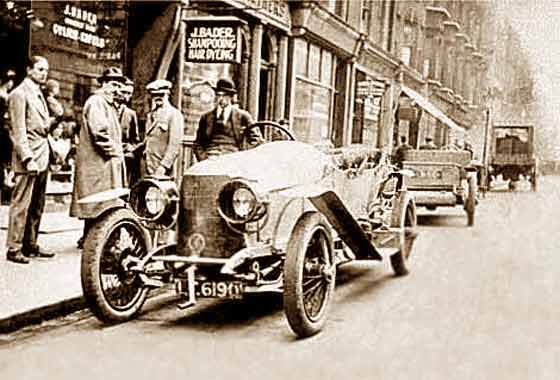|
Austro
Austro may refer to: * Austro-, a prefix denoting Austria * Austro (automobile), an Austrian cyclecar manufactured 1913–1914 * Austro Engine, an aircraft engine manufacturer * Ēostre () is a West Germanic spring goddess. The name is reflected in ang, *Ēastre (; Northumbrian dialect: ', Mercian and West Saxon dialects: ' ),Sievers 1901 p. 98 Barnhart, Robert K. ''The Barnhart Concise Dictionary of Etymology'' (1995) . ... or *Austrō, a Proto-Germanic goddess widely associated with spring and dawn * As part of scientific neologisms, 'austro-' means “ South” See also * Australo- (other) {{disambiguation ... [...More Info...] [...Related Items...] OR: [Wikipedia] [Google] [Baidu] |
Austro Engine
Austro Engine is an Austrian manufacturer of aircraft engines based at Wiener Neustadt in Lower Austria. History The production site and headquarters was built in 2007 with an investment of EUR 13 Million. The company was founded by Diamond Aircraft Industries and partners. The products are reciprocating engines and Wankel engines. The Wankel aero-engines are developed from the MidWest AE series engines developed at Staverton by MidWest, a UK firm that was bought by Diamond. Products Austro Engine E4 (AE 300) Reciprocating four-cylinder, four-stroke diesel aircraft engine, marketed as the AE 300, it produces 170 hp (127 kW). Certified through the European Aviation Safety Agency EASA on January 28, 2009 and through the FAA on July 29, 2009. The E4 is installed on various types of Diamond Aircraft Industries aircraft. Austro Engine AE 330 Derived from the AE300, the AE 330 produces an increased 180hp (132kW) of power. Two AE330s are used to power the Diamond DA62. AE50R S ... [...More Info...] [...Related Items...] OR: [Wikipedia] [Google] [Baidu] |
Austria
Austria, , bar, Östareich officially the Republic of Austria, is a country in the southern part of Central Europe, lying in the Eastern Alps. It is a federation of nine states, one of which is the capital, Vienna, the most populous city and state. A landlocked country, Austria is bordered by Germany to the northwest, the Czech Republic to the north, Slovakia to the northeast, Hungary to the east, Slovenia and Italy to the south, and Switzerland and Liechtenstein to the west. The country occupies an area of and has a population of 9 million. Austria emerged from the remnants of the Eastern and Hungarian March at the end of the first millennium. Originally a margraviate of Bavaria, it developed into a duchy of the Holy Roman Empire in 1156 and was later made an archduchy in 1453. In the 16th century, Vienna began serving as the empire's administrative capital and Austria thus became the heartland of the Habsburg monarchy. After the dissolution of the H ... [...More Info...] [...Related Items...] OR: [Wikipedia] [Google] [Baidu] |
Austro (automobile)
The Austro was made in Austria from 1913 to 1914. It was one of few cyclecars produced in Central Europe. Powered by a 6 horsepower Horsepower (hp) is a unit of measurement of power, or the rate at which work is done, usually in reference to the output of engines or motors. There are many different standards and types of horsepower. Two common definitions used today are t ... NSU engine, it had a 4-speed gearbox and double chain final drive. It had an independent front suspension, using sliding pillars on the lines of the Morgan. Austro cyclecars did well in mountain trials, as well as the Semmering Hill Climbs. Austro also manufactured aeroplanes. References ^ "Austro", in G.N. Georgano, ed., The Complete Encyclopedia of Motorcars 1885-1968 (New York: E.P. Dutton and Co., 1974). svvs.org Classic, Vintage and Veteran Cars {{brass-auto-stub Cyclecars ... [...More Info...] [...Related Items...] OR: [Wikipedia] [Google] [Baidu] |
Ēostre
() is a West Germanic spring goddess. The name is reflected in ang, *Ēastre (; Northumbrian dialect: ', Mercian and West Saxon dialects: ' ),Sievers 1901 p. 98 Barnhart, Robert K. ''The Barnhart Concise Dictionary of Etymology'' (1995) . goh, *Ôstara, and . By way of the Germanic month bearing her name (Northumbrian: ', West Saxon: '; goh, Ôstarmânoth, links=no), she is the namesake of the festival of Easter in some languages. The Old English deity Ēostre is attested solely by Bede in his 8th-century work ''The Reckoning of Time'', where Bede states that during ' (the equivalent of April), pagan Anglo-Saxons had held feasts in 's honour, but that this tradition had died out by his time, replaced by the Christian Paschal month, a celebration of the resurrection of Jesus. By way of linguistic reconstruction, the matter of a goddess called in the Proto-Germanic language has been examined in detail since the foundation of Germanic philology in the 19th century by sc ... [...More Info...] [...Related Items...] OR: [Wikipedia] [Google] [Baidu] |
South
South is one of the cardinal directions or compass points. The direction is the opposite of north and is perpendicular to both east and west. Etymology The word ''south'' comes from Old English ''sūþ'', from earlier Proto-Germanic ''*sunþaz'' ("south"), possibly related to the same Proto-Indo-European root that the word ''sun'' derived from. Some languages describe south in the same way, from the fact that it is the direction of the sun at noon (in the Northern Hemisphere), like Latin meridies 'noon, south' (from medius 'middle' + dies 'day', cf English meridional), while others describe south as the right-hand side of the rising sun, like Biblical Hebrew תֵּימָן teiman 'south' from יָמִין yamin 'right', Aramaic תַּימנַא taymna from יָמִין yamin 'right' and Syriac ܬܰܝܡܢܳܐ taymna from ܝܰܡܝܺܢܳܐ yamina (hence the name of Yemen, the land to the south/right of the Levant). Navigation By convention, the ''bottom or down-facing side'' of ... [...More Info...] [...Related Items...] OR: [Wikipedia] [Google] [Baidu] |


